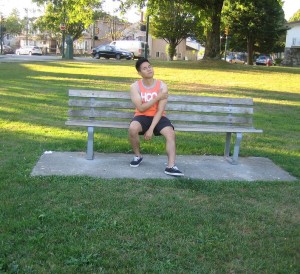Frozen shoulder or adhesive capsulitis is a condition that causes stiffness and pain in the shoulder. Over time, the shoulder becomes difficult to move. This condition typically occurs among some individuals and typically affects those between ages 40-60 years old and affects women more often than men.
What is frozen shoulder?
When it comes to frozen shoulder, the shoulder capsule thickens and becomes tight. The stiff bands of tissue or adhesions develop and in most cases, there is less synovial fluid in the joint.
The distinctive characteristic of this condition is inability to move the shoulder and develops in three stages:
- The freezing stage is pain that steadily increases. As the pain worsens the shoulder will lose range of motion and lasts from 6 weeks to 9 months.
- The frozen stage involves painful symptoms that actually improve during this stage but the stiffness lingers. During the 4-6 months of this stage, daily activities can be difficult.
- The thawing stage slowly improves during this stage and return to normal or close to usual strength and motion occurs within 6 months to 2 years.

Causes
The causes of frozen shoulder are not fully understood. There is no clear link to occupation or arm dominance. There are some factors that will put the individual at threat for developing the condition.
- Those who have diabetes typically end up with frozen shoulder and the reason is unknown.
- Immobilization is also a possible cause of frozen shoulder especially for a long period of time due to fractures, surgery or other injuries.
- Other diseases that are linked with the development of frozen shoulder include hyperthyroidism, hypothyroidism, cardiac disease and Parkinson’s disease.
What are the symptoms?
The pain from a frozen shoulder is usually aching or dull. It is typically worse during the early course of the disease and when the individual moves his/her arm. The pain is usually located over the exterior shoulder area and oftentimes in the upper arm.
Diagnosing frozen shoulder
The doctor will ask about the symptoms and medical history. The shoulder will be examined and moves it carefully in all directions to check if movement is limited or if pain occurs during motion. Those who have frozen shoulder have limited range of motion both passively and actively.
The imaging tests that are used by the doctor to rule out pain and stiffness include an X-ray, MRI and ultrasound. The X-ray will reveal the dense structures such as bone. As for MRI and ultrasound, these can reveal better images of the soft tissues.
Treatment for frozen shoulder
A frozen shoulder typically lasts over time but it can take up to 3 years. The objective of treatment is to manage the pain and restore movement and strength with the help of physical therapy. As for pain management measures, you can learn more about enrolling in a first aid course.
Non-surgical treatment
Most individuals with frozen shoulder can be treated with simple treatments to manage pain and restore motion.
Non-steroidal anti-inflammatory drugs (NSAIDs) such as ibuprofen and aspirin can help reduce the swelling and pain. In some cases, cortisone is also used since it is a potent anti-inflammatory medication that is injected directly into the shoulder joint.
Physical therapy involves specific exercises to help restore the motion. It includes stretching or range of motion exercise that focuses on the shoulder. Oftentimes, heat is also used to loosen up the shoulder before the stretching exercises.
